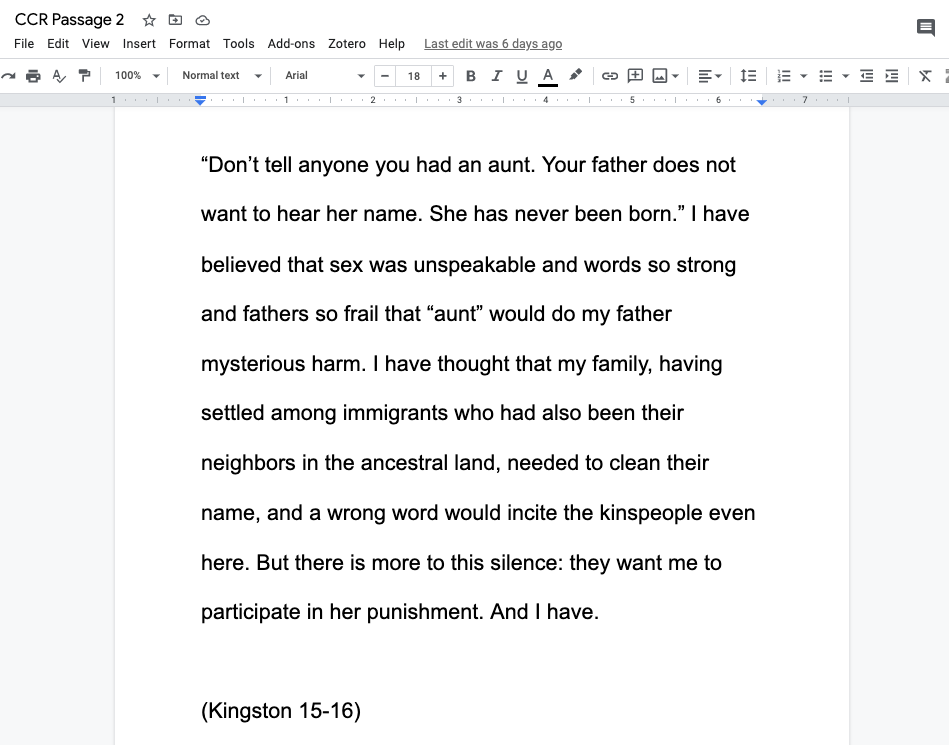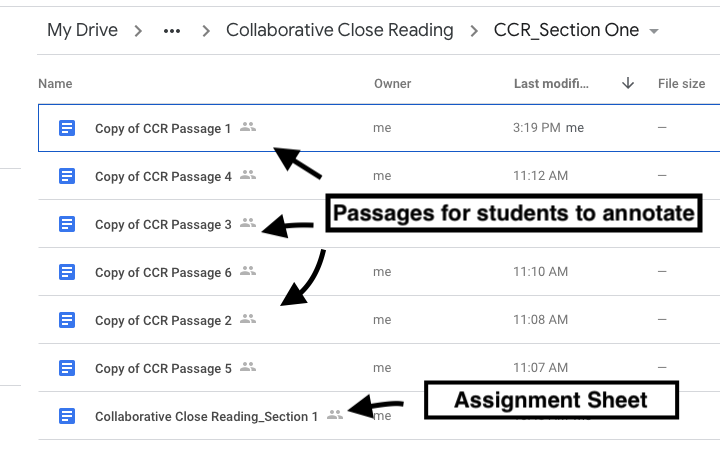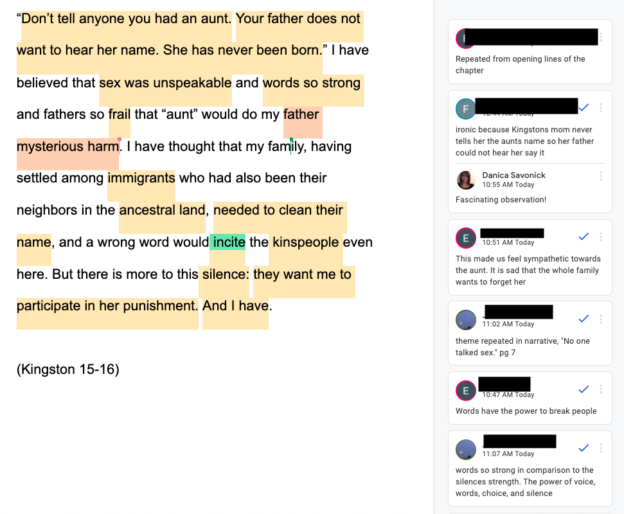This blog explains how collaborative close reading can be done online. I recommend reading that post before this one.
Since posting my collaborative close reading activity nearly two years ago, photographs of colorful, annotated excerpts have circulated on social media from classrooms all over the world. As professors have adapted this activity for different classroom contexts, I’ve witnessed students who I’ll never meet (but who will, one day, be our doctors, lawyers, and elected officials) practice reading slowly, deeply, and carefully together. I’ve watched them build off of each other’s ideas, debate the significance of words, and make thoughtful and exciting interpretations of texts, providing evidence to support their claims.
Since then, a lot has changed. Now, in October 2020, many of us are attempting to teach and learn amidst a world that is, quite literally, on fire. As we teach online, some for the first time, we are looking to the digital learning experts who have been doing this for decades and using any creative energy we can muster to design meaningful assignments that engage students without overwhelming them. Our students, too, are engaging in daily acts of heroism as they pursue education amidst such exhausting and attenuating circumstances.
In this blog post, I explain how collaborative close reading can be done online. As in the original, this version of the assignment was designed for a general education course, “Introduction to Multicultural Literature,” with 25 students, though it can certainly be adapted for other contexts. While this version involves slightly more setup on the instructor’s end, once you’ve used it in one class it can easily be replicated for others. Unlike virtual classes that can seem to go on for hours, our class realized that time flies when you’re digitally annotating passages from the assigned reading (again, Maxine Hong Kingston’s feminist masterpiece The Woman Warrior).
I share this assignment and invite you to copy, use, and remix it to your heart’s content. My hope is that it can make the lives of some professors and students the tiniest bit less stressful and more joyful.
Overview
Time: Between 1.5 – 2 hours, can be done in one long class period or over the course of two shorter periods.
Platforms: This version of the activity uses Google Docs and Zoom (including breakout rooms), but can easily be adapted for other platforms.
There are other great digital annotation tools out there like Hypothesis (check out this excellent webinar) and Manifold. I chose Google Docs because we’ve been using that platform all semester, and I didn’t want to overwhelm students by introducing another platform. Google Docs is by no means perfect and doesn’t always function in low-bandwidth environments. In the comments section, I would love to hear more about how others have adapted this assignment using different platforms.
Instructor Set Up
- Create an assignment sheet and set to “Anyone with the link can view.” In Part One (50 minutes) of the assignment, students work in small groups to annotate passages from a text. In Part Two (50 minutes), students work in those same small groups to write a paragraph analyzing one of the passages from the reading. I recommend not making Part Two of the assignment visible until Part One is complete to avoid overwhelming students.
- If you have additional time, it might be worth exploring a Part Three, in which the entire class reviews the three passages and each group presents their interpretations.
- Create Google Docs with passages for students to annotate.
- Select between 3-6 passages for students to annotate (6-7 lines of poetry or 5-6 sentences of prose works best).
- Copy each passage into a separate Google Doc. Make the font large and double spaced. Set each document to “Anyone with the link can edit.” Note: you can change the share settings of multiple documents at once.
- Keep in mind that you can double up on passages. For my class, students have been working in six small groups throughout the semester, which meant I needed six passages. I selected three passages and created two copies of each, numbering them 1 through 6. Passages 1 and 4 were identical, 2 and 5 were identical, and 3 and 6 were identical. This meant that over the course of three rounds, every student saw every passage.


Once everything is set up, you’re ready to go! Begin by sharing the assignment sheet with students and walk them through the instructions. For the activity, place students in breakout rooms with 3-5 students in each group.

All other instructions can be found in the assignment sheet. Happy reading!
